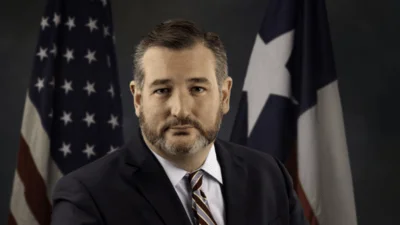The Congressional Record is a unique source of public documentation. It started in 1873, documenting nearly all the major and minor policies being discussed and debated.
“RESOLUTIONS SUBMITTED TODAY” mentioning the U.S. Dept. of Commerce was published in the Senate section on pages S5193-S5194 on July 14, 2016.
The publication is reproduced in full below:
RESOLUTIONS SUBMITTED TODAY
Ms. MURKOWSKI. Mr. President, I ask unanimous consent that the Senate now proceed to the en bloc consideration of the following Senate resolutions, which were submitted earlier today: S. Res. 538, S. Res. 539, S. Res. 540, S. Res. 541, S. Res. 542, S. Res. 543, S. Res. 544, S. Res. 545, S. Res. 546, S. Res. 547, and S. Res. 548.
There being no objection, the Senate proceeded to consider the resolutions en bloc.
S. Res. 541
Ms. HIRONO. Thank you, Mr. President.
I rise today to introduce a resolution to commemorate Hawaii Volcanoes National Park and Haleakala National Park on their 100th anniversary.
On August 1, 1916, 3 weeks prior to the founding of the National Park Service, Congress established Hawaii National Park, comprised of two sections located on the island of Maui and the island of Hawaii. The two sections of the park were subsequently separated and redesignated as Haleakala National Park and Hawaii Volcanoes National Park.
The two parks were set aside in perpetuity for the benefit and enjoyment of the people of Hawaii and the people of the United States. In the last 100 years, they have served their purpose well. Last year, over 1.2 million people visited Haleakala National Park, while over 1.8 million people visited Hawaii Volcanoes National Park.
The parks have also proven to be an economic boon to the State of Hawaii. In 2015, visitors to Haleakala National Park spent over $76 million in surrounding communities, supporting nearly 1,000 jobs.
Visitors to Hawaii Volcanoes National Park spent over $151 million in areas around the park and supported nearly 2,000 local jobs. However, the importance of Haleakala National Park and Hawaii Volcanoes National Park to the people of the State of Hawaii, to the Nation, and globally is much more than economic benefit. The parks serve as invaluable scientific and cultural assets and have been instrumental in preserving some of the most ecologically diverse ecosystems in the world.
For example, Hawaii Volcanoes National Park is home to two of the world's most active volcanoes, providing visitors the ability to gain a greater understanding of volcanic and geologic processes. Hawaii's isolation and the substantial number of plant and animal species that are native to Hawaii and found nowhere else in the world have contributed greatly to our understanding of evolutionary biology.
The scientific significance of both Hawaii Volcanoes National Park and Haleakala National Park was highlighted when the United Nations Educational, Scientific and Cultural Organization designated both parks as biosphere reserves in 1980.
Hawaii Volcanoes and Haleakala also provide access to substantial cultural and historic resources. Hawaii Volcanoes National Park is home to a number of precontact archaeological sites, including Puu Loa, which contains over 23,000 petroglyphs.
However, Hawaii's national parks are not places where culture is discussed in the past tense. Even today, Native Hawaiians come to these parks to renew ties to ancestors, conduct cultural gatherings and rituals, and pass traditions down to the next generation.
Both parks also serve as a refuge for hundreds of native plants and animals, many of which are endangered and threatened. Indeed, Haleakala National Park is home to more endangered species than any other site in the National Park System, including the Hawaiian Silversword, and dozens of endangered Native Hawaiian birds.
For the last century, residents of Hawaii, the United States, and the world have visited Haleakala National Park and Hawaii Volcanoes National Park and gained a greater appreciation for the natural environment, the history of Hawaii, and Native Hawaiian culture. As we celebrate the 100th anniversary of the establishment of these parks, I hope my colleagues will join me in recognizing August 1, 2016, as
``Hawaii Volcanoes and Haleakala National Parks Day'' and encourage as many people as possible from across the Nation to come to Hawaii to visit these national treasures.
s. res. 542
Mr. GRASSLEY. Mr. President, as a member of the Congressional Trademark Caucus, I have made it a goal to increase awareness and spark a dialogue about the importance of trademarks. Because this year constitutes the 70th anniversary of the Lanham Act, I would like to join my colleague, Senator Coons, in introducing a resolution to recognize the Lanham Act and designate July as National Anti-
Counterfeiting Consumer Education and Awareness Month.
Seventy years ago, the Lanham Act was signed by President Harry Truman to establish remedies for brand owners suffering from trademark infringement and to protect consumers from counterfeit products. It is this very law that has laid the foundation for modern trademark protection and led to a tremendous increase in the use of trademarks.
According to the World Intellectual Property Organization, in 2012, approximately 24 million trademarks were in force around the world. Further, the U.S. Department of Commerce reports that 31 percent of all jobs in the United States are in intellectual property-intensive industries.
Despite the legal framework currently in place to protect against counterfeiting, trademark-related crimes are one of the fastest growing economic problems worldwide. According to the Organization for Economic Cooperation and Development, manufacturing, trade, and consumption of counterfeit products continues to increase, escalating from $250 billion in 2008 to $461 billion in 2013.
Other counterfeiting trends were recently highlighted in a study released by the U.S. Chamber of Commerce Global Intellectual Property Center, GIPC. The study found that China and Hong Kong alone represent 86 percent of the global physical counterfeiting. This translates into
$396.5 billion worth of counterfeit goods each year. This level of counterfeiting activity bears serious economic and health and safety implications, both locally and internationally.
The GIPC also found that the value of seized counterfeit goods by customs in 38 sampled economies totals less than 2.5 percent of the global measure of physical counterfeiting. This suggests that although the efforts of customs authorities yield results, the extent of their success is still ``a drop in the bucket.''
Not only are trademark-related crimes growing rapidly, the devastating effects are also far-reaching. Trademark-related crimes impact not only whole industries, but economies as well. The most direct impact of counterfeiting is revenue loss. The GIPC estimates losses to be in the billions for any given industry.
Brand owners are actively responding to this problem. According to a GIPC report, some companies spend as much as $20 million annually in an attempt to fight counterfeiting of their products. This is money that could have been spent on research and development, business expansion, and innovation.
There are also indirect effects stemming from counterfeit products that cause economic disruption. For example, the presence of counterfeits leads to lowered incentives for innovation, spiking unemployment rates, and slower economic growth. This is a serious issue for the United States, considering the U.S. Department of Commerce reports intellectual property generates 34 percent of U.S. GDP, two-
thirds of U.S. exports, and $5.8 trillion in U.S. output.
Counterfeits have devastating effects on the health and safety of consumers. For example, there has been a spike in production of fakes that have an immense impact on everyday life--such as airbags, smoke detectors, computer chips, and prescription drugs.
With increased counterfeiting of so many everyday products, the presumption of quality and effectiveness is becoming less certain. Unfortunately, there is an increased possibility of lasting and potentially fatal consequences for consumers' health and safety.
In April, the Senate Judiciary Committee held a hearing entitled,
``Counterfeits and Their Impact on Consumer Health and Safety.'' This hearing specifically explored how hazardous counterfeit products--like medicines, electronics, automotive, and military parts--can harm consumers.
The hearing panel warned that consumers unknowingly purchase counterfeits. In fact, consumers often pay the same as they would for legitimate goods, but receive potentially unsafe products. For example, consumers are purchasing fake chargers that may explode or medicines that may be manufactured with dangerous or contaminated substances. These types of counterfeits can result in severe injuries, including death.
The hearing panel also discussed the exploitation by counterfeits of e-commerce platforms with a business direct to consumer business model. Cyber commerce, for-profit streaming, and ever-changing technologies have continued to present new challenges in combating counterfeiting activity. They also discussed the changing tactics of counterfeiters, including small package delivery through the mail, which make it difficult for law enforcement to go after these criminals.
Counterfeit products have been found to have ties to terrorism, trafficking, and organized crime groups around the world. According to the GIPC report, Interpol and FBI seizure records suggest that proceeds from counterfeit brake pads and cigarettes have been earmarked for terrorist groups like Hezbollah and al-Qaeda. As the scope of counterfeit products increases, so does the ability of criminal and hostile organizations to fund their illicit and harmful operations.
Increased education and awareness efforts are critical to helping to put a stop to ar counterfeit activity. That is why we are honoring the Lanham Act and designating July as National Anti-Counterfeiting Consumer Education and Awareness Month. Educating members of Congress, the media, and the public about the dangers of counterfeits and the vital role trademarks play will help protect consumers from confusion and deception in the marketplace. In addition, Congress, Federal agencies and law enforcement, the business community, and consumer groups must all work together so we can keep consumers safe.
As chairman of the Senate Judiciary Committee, as well as in my capacity as a cochair of the Congressional Trademark Caucus, I will continue to work aggressively to facilitate dialogue, inform consumers, and collaborate with government agencies on trademark-related issues. And I am pleased to work my colleague Senator Coons on this resolution.
Mr. COONS. Mr. President, with Senator Chuck Grassley, I am proud to cosponsor a resolution designating July 2016 as the ``National Anti-
Counterfeiting Consumer Education and Awareness'' Month in celebration of the 70th anniversary of the Lanham Act, which provided the foundation for our modern Federal trademark registration system. Not only are trademarks a source of significant value for companies, but they also play an important role in communicating the authenticity and integrity of products and services to customers, thereby promoting consumer safety. For example, counterfeit batteries, sometimes featuring fake trademarks, have been linked to increased risks of spontaneous fires--a clear safety hazard if that battery is in a consumer product such as a children's toy. According to the U.S. Customs and Border Protection Agency, seizures related to counterfeit intellectual property increased almost 25 percent between 2014 and 2015. While the government must continue its interception of fake goods at our borders, these numbers and the apparent rise of this problem also call for greater consumer awareness of the risks of buying counterfeit products. By designating this month the ``National Anti-
Counterfeiting Consumer Education and Awareness'' Month, I hope to foster such an awareness and the role that intellectual property--here, the trademark system--plays in helping to protect consumers.
Ms. MURKOWSKI. Mr. President, I ask unanimous consent that the resolutions be agreed to, the preambles be agreed to, and the motions to reconsider be considered made and laid upon the table en bloc.
The PRESIDING OFFICER. Without objection, it is so ordered.
The resolutions were agreed to.
The preambles were agreed to.
(The resolutions, with their preambles, are printed in today's Record under ``Submitted Resolutions.'')
____________________








